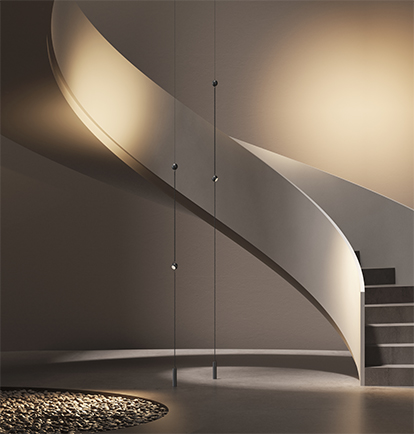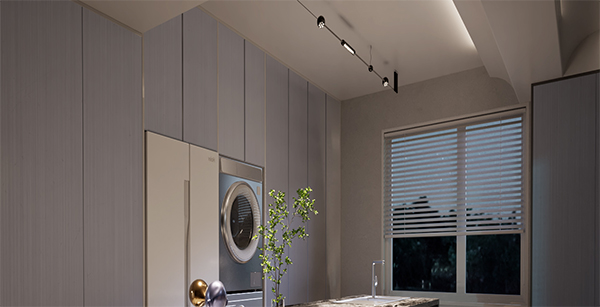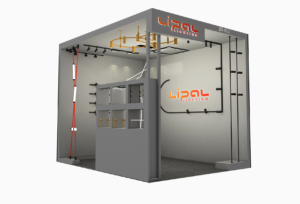Wrong lighting planning can really spoil your space. It doesn’t matter how good the luminaires’ materials, colors, and textures are. We are talking about using and expressing light with suitable lighting fixtures.
If you want to learn how to choose your lights and distribute them correctly in your space, let’s start by understanding the different types of lights, depending on their function. We can divide them into two main categories: decorative and architectural lights.

Decorative lights are lamps that contribute to the aesthetics of a space and provide us with a lighting effect. These lamps come in different shapes and styles, such as chandeliers, wall lamps, floor lamps, or table lamps. As well as illuminating a specific area, its purpose is to beautify a space thanks to its shape and the materials used in its composition.
As well as providing decorative light, the lamps themselves are an essential element in the composition of space. Lipal’s chandelier range and Wall light range are ideal for creating a cozy atmosphere; the light and shadows cast are soft and allow the light to be distributed evenly throughout the space.
The best lighting choice will depend on the style of your entire space; for example, if your interior design style is minimalist, choose a lamp with simple lines and shapes; Lipal’s magnetic system range is a good choice, or Spacewalk system.

We can also achieve various purposes by choosing lights with similar shapes made from different materials or colors or combining the light with entirely other forms of material, such as pairing it with an acoustic panel for noise absorption.
On the other hand, architectural lights are part of the architectural aesthetic; they are freestanding luminaires used in all interior spaces; regardless of their style, their purpose is more practical and functional to illuminate the room. These include a recessed downlight, surface downlight, linear lights, track light, and spotlight, whose primary purpose is to illuminate the area and express the spatial elements adequately.

Let’s look at what is used and how each actual light is used. They are very typical for the general lighting of a space. It helps if you have a whole ceiling to install them in. They require space for a system that can be used for residential and commercial purposes in any area; they are functional, very discrete luminaires that do not alter the room’s aesthetics.
If the luminaire is available with a full range of beam angles, such as Lipal’s zoomable track light range, with a flexible choice of beam angles from 15-55°, the entire range of luminaires can be ideal for ambient lighting in any space, from commercial space to public space as well as residential space, The correct use is to highlight specific areas of decorative or architectural detailing, but not to distribute them throughout the room to achieve general illumination.

Ceiling lights mainly include recessed and surface mounted downlights, their main objective being the general illumination of the space. They illuminate a large area of space evenly and are generally distinguished by the size of the opening and how they are adjusted. At Lipal, we have the classic Swan downlight, the 2 heads/ 3 heads grille downlight, and the new Mocare range, which helps you install the light easily without damaging the ceiling.
The spotlights can be with the track, surface, or recessed mount. As the name suggests, their purpose is to highlight specific interior design elements, such as accent lighting, illuminating paintings, sculptures, decorative objects, leading merchandise, etc. Again, depending on the area to be illuminated, the beam angle is available as SML.

Track lighting and magnetic lighting systems are the saviors of spaces without suspended ceilings. You can distribute the light linearly over the entire track to illuminate the space evenly without having to modify your electrical system; for example, if your space is dark and you have only one light outlet in the center of the ceiling, this system is very convenient because you can use this single outlet to distribute various light points over the track. With the Lipal LM40 or Multisystem, you will encounter more possibilities and flexibility.

The slim track light is one of the favorites of designers in contemporary lighting design, as it is paired with a variety of fixtures with functionality and minimalist design; slim track lights in Lipal we recommend our Microsystem, it can define volumes, illuminate furniture, or display cabinets, and provide a soft, uniform light.
In some cases, architectural lighting is also increasingly seen as interior lighting. Industrial modern or minimalist styles have made it part of their aesthetic language as the aesthetic has evolved.
Anytime anywhere, visit the www.lipal.cn or email us at [email protected] for more professional architecture lighting information.




